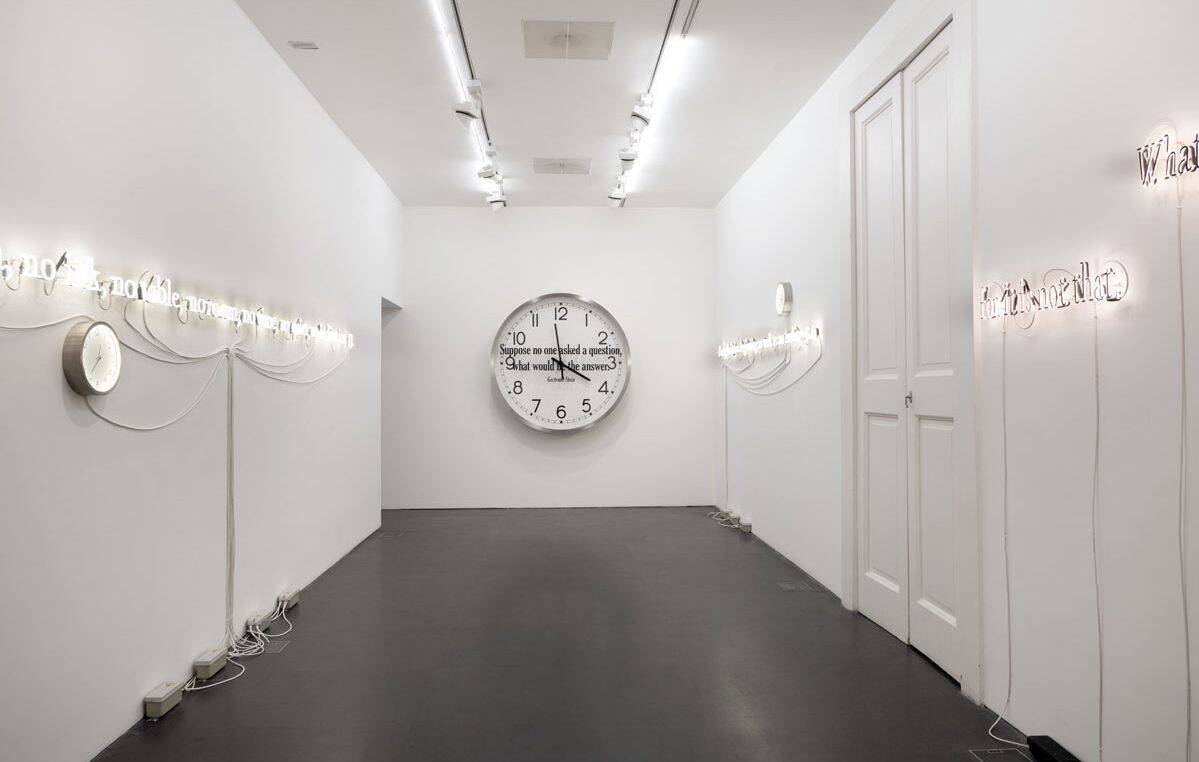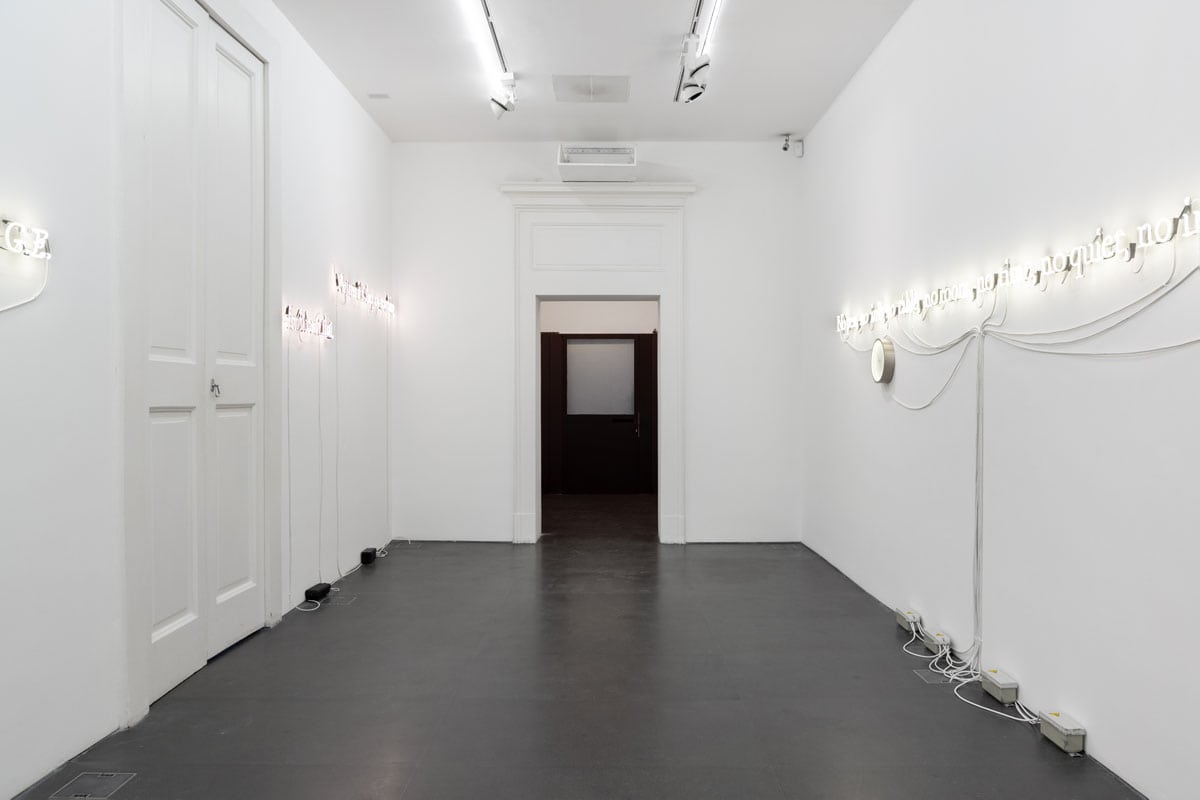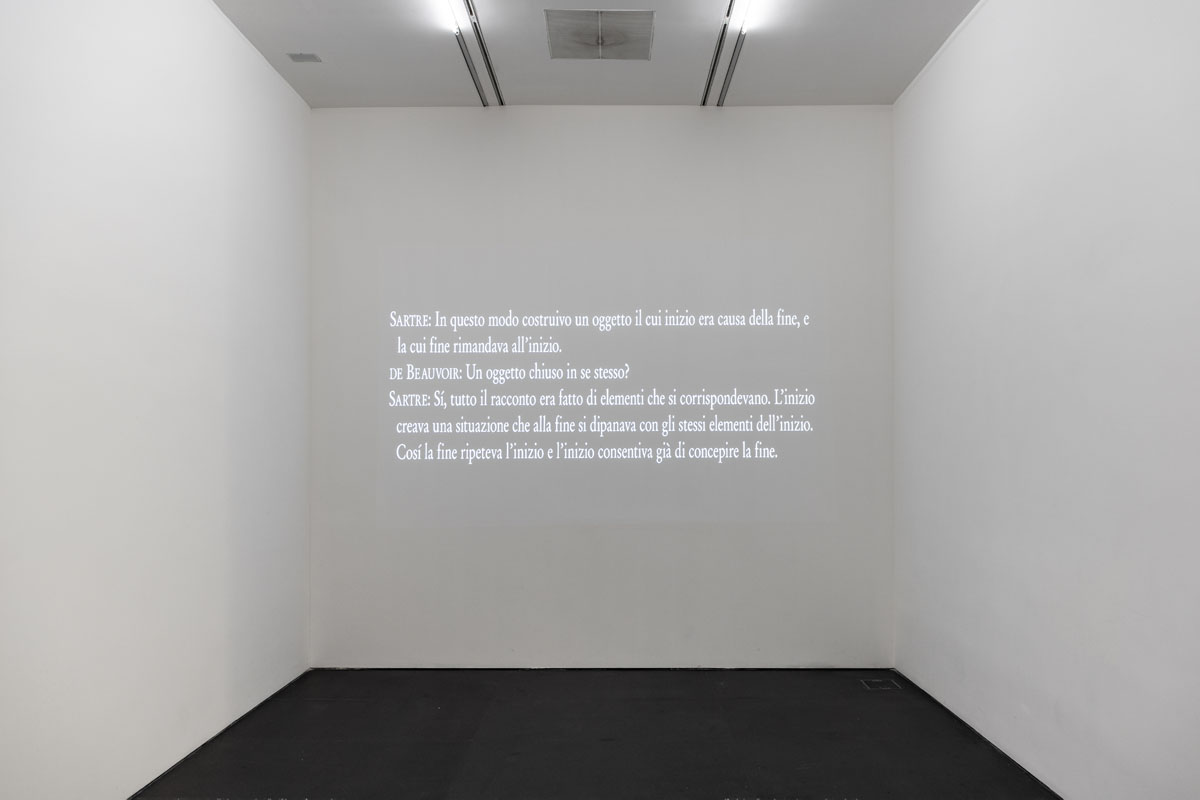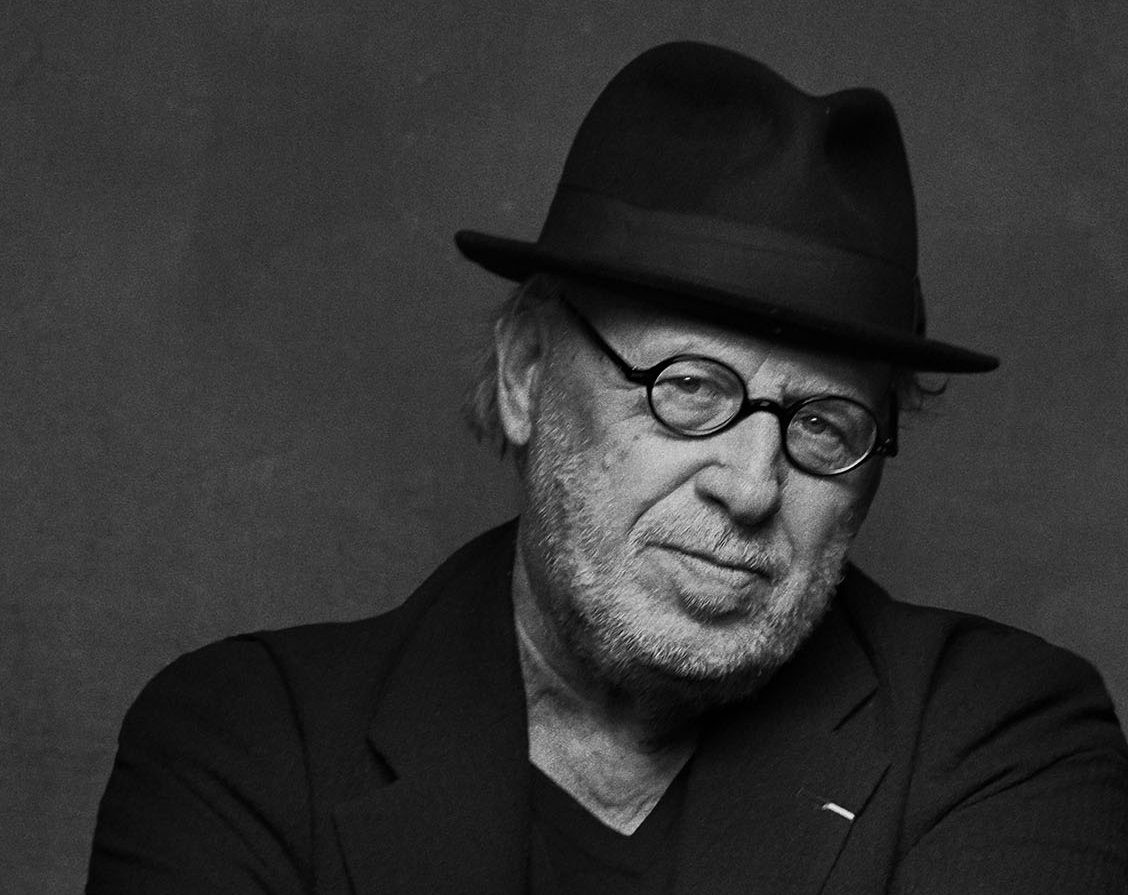Lia Rumma Gallery in Naples is pleased to announce the opening, on Thursday 10 April, of Joseph Kosuth’s major solo exhibition ‘The Question’, which marks the artist’s return to the city.
The American artist Joseph Kosuth (Toledo/Ohio, 1945), considered one of the pioneers of Conceptual art, has recently celebrated his eightieth birthday with various exhibitions organised* in Europe and America. He returns to Naples for an exhibition that confirms his solid, longlasting collaboration with Lia Rumma who actually opened her gallery in 1971 with Kosuth with an installation that was to make history: The Eighth Investigation (A.A.I.A.I.) Proposition 6. His professional relationship and friendship with Lia Rumma has led Kosuth to hold several exhibitions in the Lia Rumma galleries over time, both in Naples and Milan.
In this new exhibition, Kosuth reflects once again on the concept of “time” which stems both from a personal and philosophical urgency. His reflections have led to an inquiry into the process of creating meaning in his artistic practice, presenting a series of works made at various stages of his career. Because, as Borges wrote, “If space is infinite, we may be at any point in space. If time is infinite, we may be at any point in time”.
Besides being the title of the exhibition, ‘The Question’ is a reference to a new work made in 2025: a large wall clock with the quotation Suppose no one asked a question, what would be the answer?, a remark made by the American writer Gertrude Stein in 1928. Time is therefore mentioned both literally (with the hands indicating a time chosen by the artist) and figuratively through the reference to another author. However, the presence of an analogue clock (in the installation in the Lia Rumma Gallery in 1971, there were 12 clocks) also features in two other works in the series “Existential Time” (2019), on this occasion accompanied by two quotations in neon taken from George Eliot and James Joyce, in which Kosuth seeks to underline the lack, limits and superabundance of meaning that surrounds the experience of time and life, exploring the present, its power and its confined space.
The exhibition also includes the work One and three Rakes (1965) which marks a step back in time and a return to the “Proto–Investigations” of the years 1965-1966. This iconic work presents exhibits placed side by side: the actual object (a rake), a photograph of the rake and its definition taken from a dictionary that describes the term in all its various meanings. By assembling an object, a photograph of the object and an enlarged dictionary definition, Joseph Kosuth presents the viewer with a linguistic system that becomes far more complex when confronted with that of art. “The art I call conceptual is such because it is based on an inquiry into art”, Kosuth has stated on various occasions. “Fundamental to this idea of art is the understanding of the linguistic nature of all art propositions, be they past or present, and regardless of the elements used in their construction”.
* Sprüth Magers, London (January – March 2025); Sean Kelly, New York (March – April 2025)









